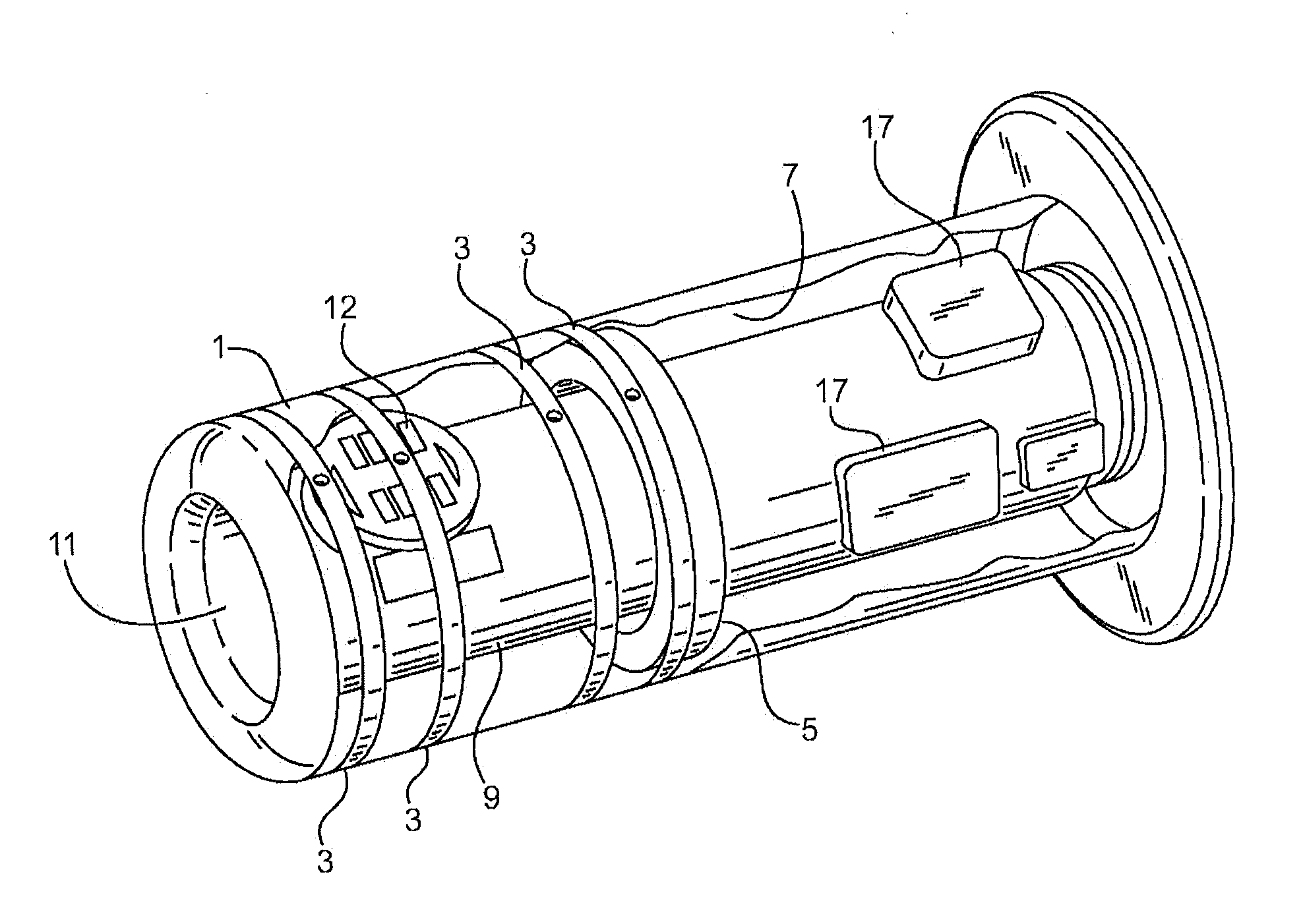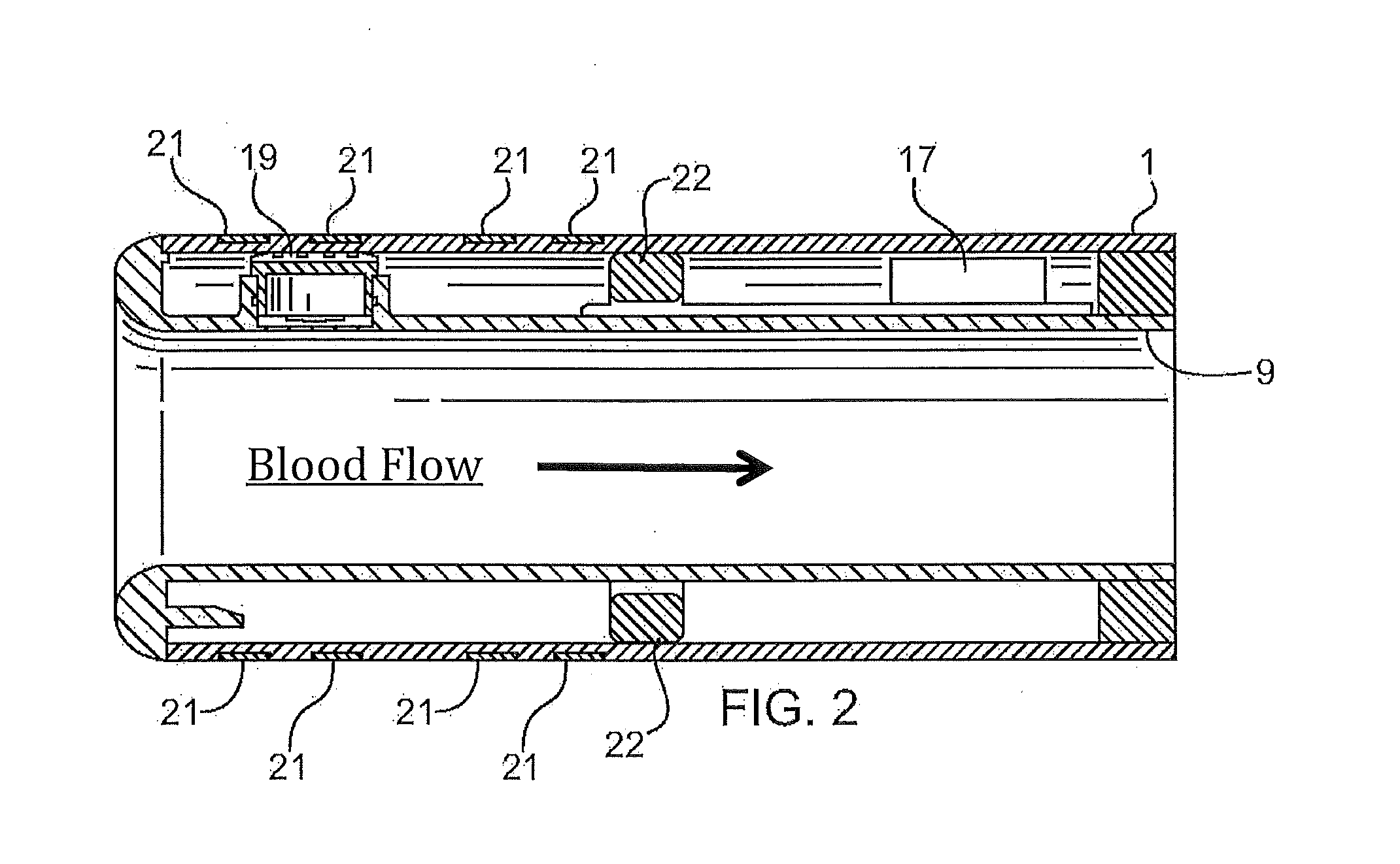Smart Tip LVAD Inlet Cannula
a technology of inlet cannula and lvad, which is applied in the direction of prosthesis, angiography, therapy, etc., can solve the problems of limiting flow, receiving optimal amount of blood flow, and limiting activity, so as to reduce the incidence of ventricular collapse and minimize the likelihood of collaps
- Summary
- Abstract
- Description
- Claims
- Application Information
AI Technical Summary
Benefits of technology
Problems solved by technology
Method used
Image
Examples
Embodiment Construction
[0024]We have found that a left-ventricular assist device (“LVAD”) that includes multiple independent sensors may help decrease the incidence of ventricular collapse during LVAD use. Embodiments of the invention may include conductance electrodes and / or pressure sensors in an LVAD cannula tip for determination of ventricular pressure, ventricular volume, and ventricular wall location.
[0025]The sensors are conductance and / or pressure sensors. The use of conductance electrode technology may be better understood with reference to the figures. FIG. 1 shows an embodiment of the invention in which a wall is shown as transparent. This transparency is for the convenience of the viewer in FIG. 1, and is not a requirement of embodiments of the invention. FIG. 1 shows an LVAD cannula tip including an outer wall 1 surrounded by a plurality of concentric electrodes 3 in communication with electronics 17 and a transceiver coil 5. In a preferred embodiment there are four concentric platinum electr...
PUM
 Login to View More
Login to View More Abstract
Description
Claims
Application Information
 Login to View More
Login to View More - R&D
- Intellectual Property
- Life Sciences
- Materials
- Tech Scout
- Unparalleled Data Quality
- Higher Quality Content
- 60% Fewer Hallucinations
Browse by: Latest US Patents, China's latest patents, Technical Efficacy Thesaurus, Application Domain, Technology Topic, Popular Technical Reports.
© 2025 PatSnap. All rights reserved.Legal|Privacy policy|Modern Slavery Act Transparency Statement|Sitemap|About US| Contact US: help@patsnap.com



